10 Astronomy Events In April You Don’t Want To Miss
1st Apr 2024
Get ready to observe the sky in April 2024! From a total solar eclipse shadowing North America and other countries to a meteor shower taking over the skies of the Southern Hemisphere, several celestial occurrences scheduled for 2024 will capture your attention.
Here’s a calendar for you to keep handy for some fruitful nights of observing the skies.
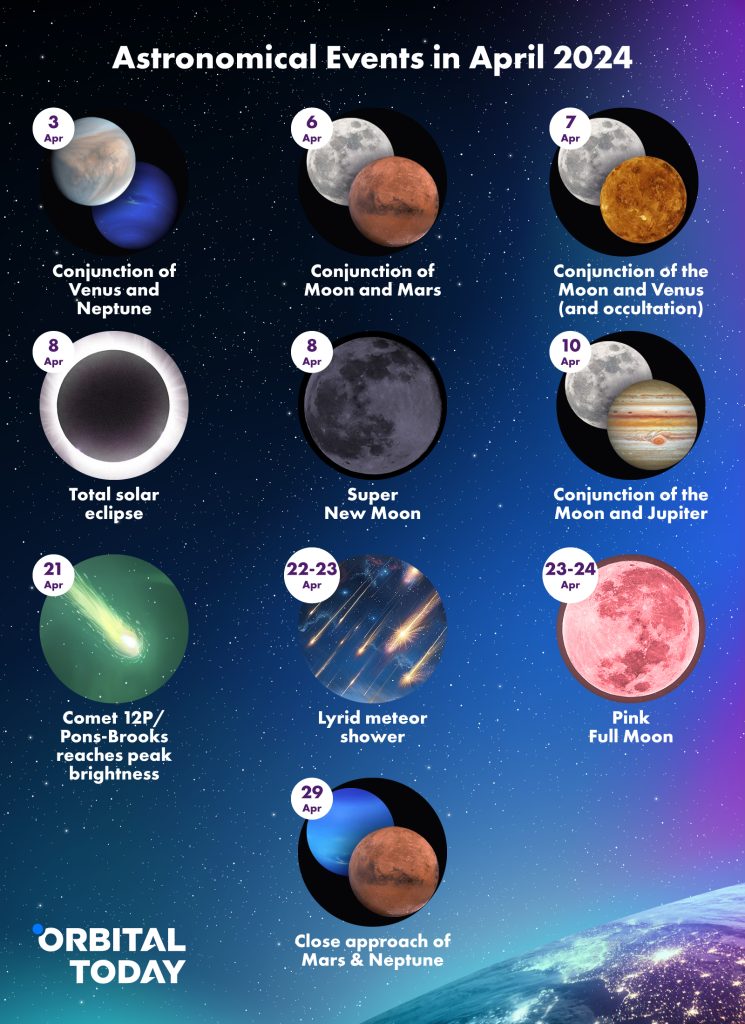
3 April – Conjunction Of Venus And Neptune
The first astronomical event visible through a telescope, or a pair of binoculars is Venus and Neptune conjunction. The planets will share the same right ascension, with Venus passing 17′ to the south of Neptune. Close approach time: 13:11 GMT (9:11 a.m. EDT).
6th April – Conjunction Of Moon And Mars
The procession of planetary conjunctions continues on 6th April: the Moon and Mars will share the same right ascension (the same point in the sky when measured from a certain starting point), with the Moon passing 1°58′ to the south of Mars. At around the same time, the two objects will also make a close approach, technically called an appulse.
The distance between the pair will be great to observe within the telescope’s field of view. However, they will still be visible to the naked eye or through a pair of binoculars. Conjunction time: 03:51 GMT (5th April, 11:51 p.m. EDT). Close approach time: 05:08 GMT (1:08 a.m. EDT).
7th April – Conjunction Of The Moon And Venus (And Occultation)
On 7th April, the Moon and Venus will share the same right ascension, with the Moon passing 23′ to the north of Venus. The Moon will be 28 days old.
Also, on this date, the phenomenon known as lunar occultation will take place: the Moon will pass in front of Venus. This event will be visible from countries and territories including the eastern Contiguous United States, eastern Canada, Mexico and southern Greenland amongst others.
The occultation will only be visible across part of the world because the Moon is so close to the Earth that its position in the sky varies by as much as two degrees across the world. But still a close conjunction between the pair can be more widely visible.
8th April – Total Solar Eclipse
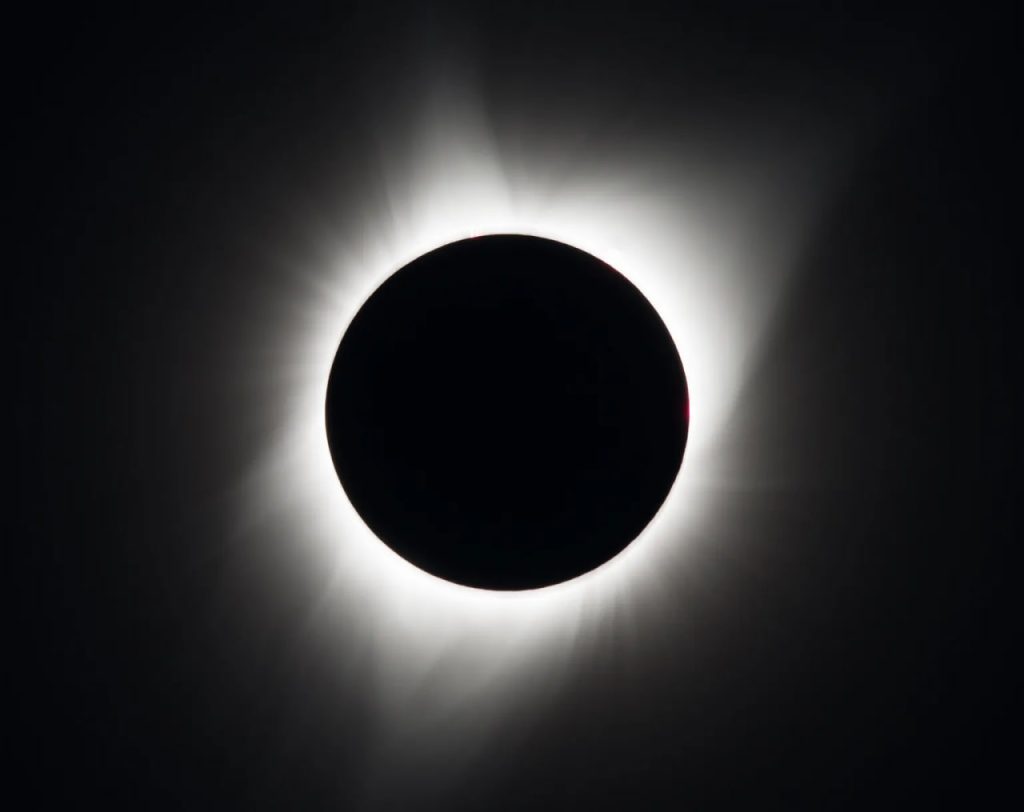
The most anticipated celestial event of this month, the total solar eclipse, will occur on 8th April, from 15:43 GMT to 20:52 GMT. The Moon will completely cover the Sun which will be visible from North America and pass over Mexico and Canada. It will be the last total solar eclipse to hit the US for two decades.
This phenomenon happens when the Moon passes between the Sun and the Earth. The sky darkens as the face of the Sun is blocked entirely. The atmosphere becomes dusky, however, and for those planning to look up at the sky, proper equipment is essential so as not to hurt your eyes.
8th April – Super New Moon
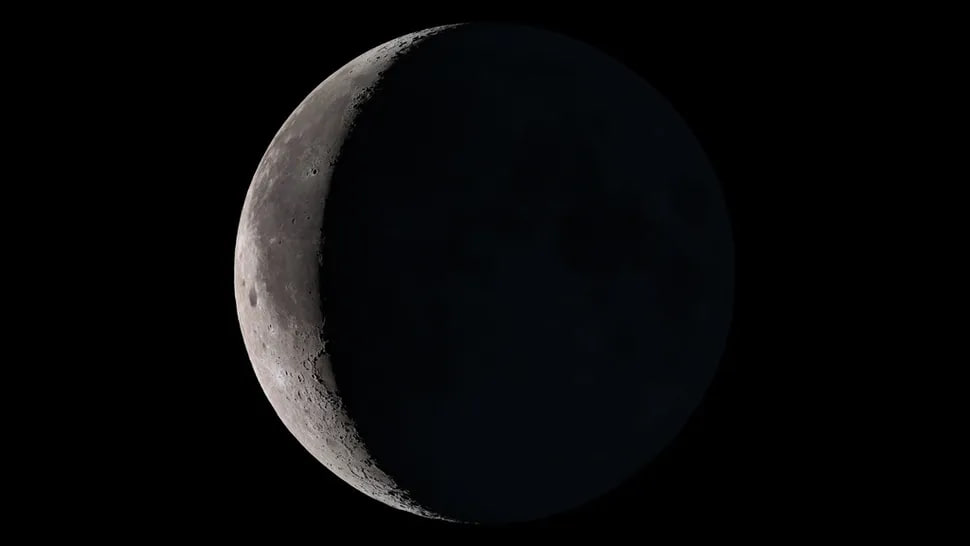
The New Moon this month will occur on 8th April , at 18:21 GMT (2:21 p.m. EDT). At this point, our natural satellite will stay between the Earth and the Sun, so its bright side will be facing away from the Earth.
The New Moon occurs when the Sun and Moon are aligned, with the Sun and Earth on opposite sides of the Moon. The Moon will be located on the same side of the Earth as the Sun and will not be visible in the night sky. This phase occurs at 18:22 UTC. This is the best time of the month to observe faint objects such as galaxies and star clusters because there is no moonlight to interfere.
Important to note, that it will be a Super New Moon. The Moon orbits Earth on an elliptical path, so its distance from Earth changes during a lunar month. The point closest to Earth is called perigee, and the farthest point is known as apogee. When the New Moon is close to the perigee, it is known as a Super New Moon.
8th April – Conjunction Of The Moon And Jupiter
On 8th April, the planets Saturn and Mars will make a close approach, passing within a mere 26.4 arcminutes of each other. You can observe the pair in the night sky through the telescope, a pair of binoculars, or even with the naked eye.
21th April – Comet 12P/Pons-Brooks Reaches Peak Brightness
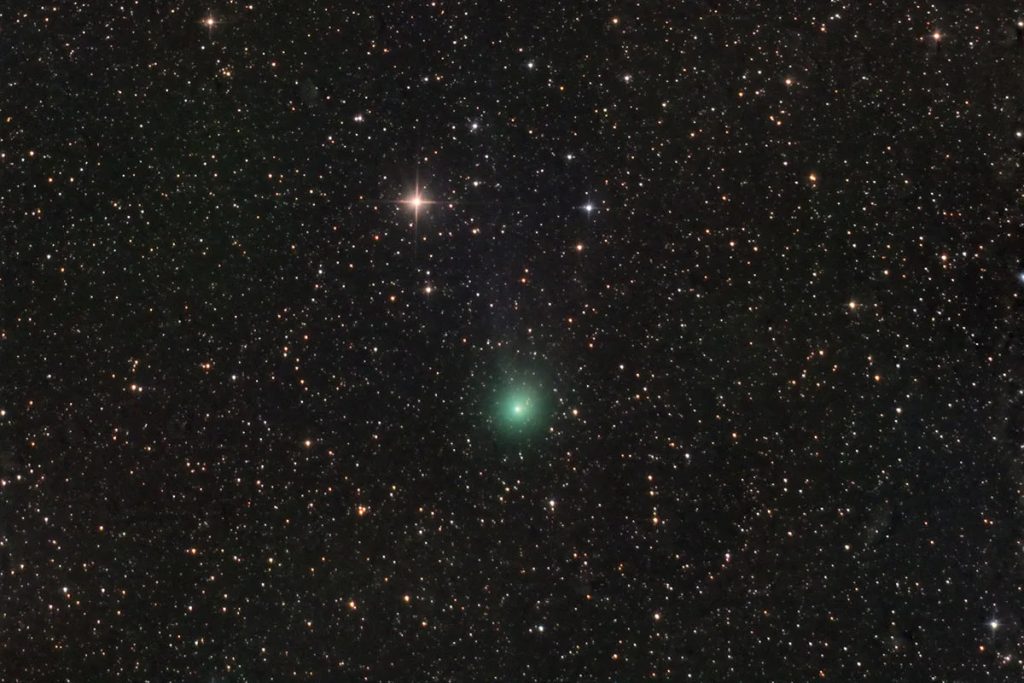
On 21st April, the Comet 12P/Pons-Brooks will reach the brightest point in its 2024 apparition. By that time, it is expected to become visible to the naked eye (its magnitude will rise to 4.2). Soon after the perihelion, the comet will disappear from the Northern Hemisphere’s night sky. In the Southern Hemisphere, it will remain visible until the end of the year.
However, comets are highly unpredictable objects since their brightness depends on the scattering of sunlight from dust particles in the comet’s coma and tail. This dust is continually streaming away from the comet’s nucleus. Its density at any particular time is regulated by the rate of sublimation of the ice in the comet’s nucleus, as it is heated by the Sun’s rays. It also depends on the amount of dust that is mixed in with that ice. This is very difficult to predict in advance and can be highly variable even between successive apparitions of the same comet.
22nd-23rd April – Lyrid Meteor Shower
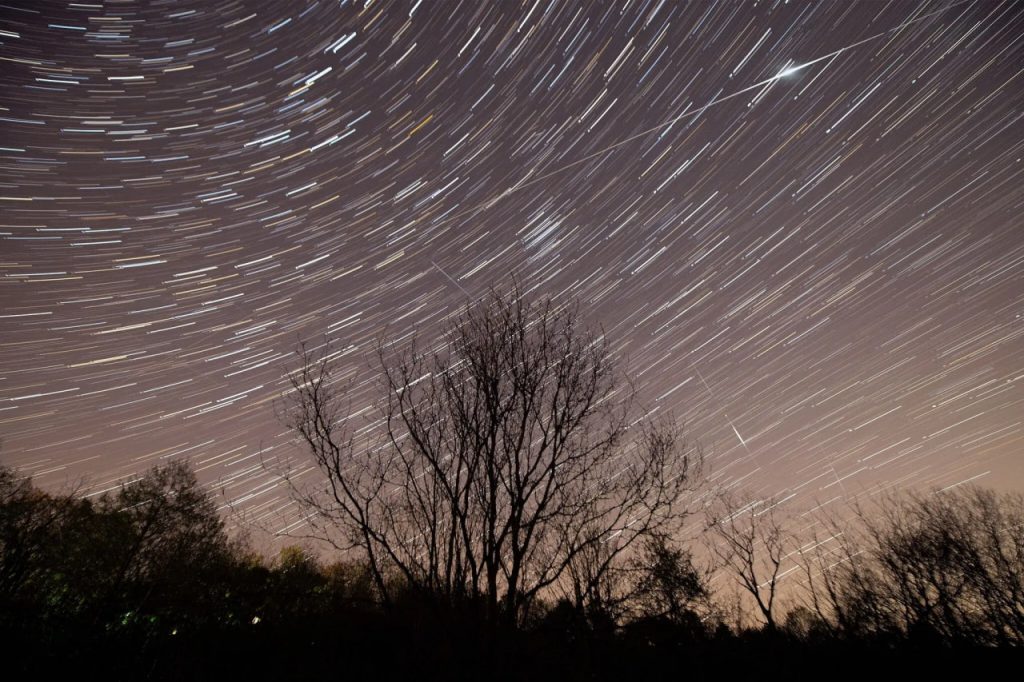
On 22nd-23rd April, the most popular and long-awaited meteor showers of the year will occur, known to produce bright fireballs. It is also one of our more moderate annual showers, with about 10 to 15 meteors soaring across the sky under ideal conditions.
The meteors of Lyrid appear to originate from the constellation of Lyra, with its radiant point placed up north on the sky’s dome, giving the event its name. This means that gazers in the Southern Hemisphere may see fewer Lyrid meteors.
The bright Lyrid meteor shower is known to leave behind dusky trails that glow for several seconds after they’ve passed. However, this year, the Lyrids reach their maximum three days before the Full Moon, so the moonlight will likely outshine most meteors. A small tip: try finding a dark spot with clear skies for the best viewing.
23rd-24th April – Pink Full Moon
The Full Moon on 23rd-24th April is named the Pink Moon after the brightly-coloured pink phlox wildflowers that are native to North America and that often bloom around the time of April’s Full Moon. The Moon will be located on the opposite side of the Earth as the Sun and its face will be will be fully illuminated. This phase occurs at 23:50 UTC.
The other names of April’s Full Moon are Breaking Ice Moon, Budding Moon, Awakening Moon, Egg Moon, Paschal Moon, and Moon of the Red Grass Appearing. Common names in Europe refer to the budding and birth of Spring, with grass sprouting, birds laying eggs, and people planting seeds.
The Celts had names like Budding Moon, New Shoots Moon, Seed Moon, and Growing Moon. A Neo-Pagan name is Awakening Moon.
The Anglo-Saxons called it Egg Moon, which is often referenced as a possible reason for the emergence of the modern Easter Bunny laying Easter eggs.
Many coastal tribes called it the Fish Moon because this was the time that the shad swam upstream to spawn.
29th April – Close Approach Of Mars And Neptune
The last astronomical event visible with the naked eye, through a telescope or a pair of binoculars, is taking place on 29th April. The planets Mars and Neptune will make a close approach, passing within a mere 2.1 arcminutes of each other. The close approach time is 04:31 GMT (12:31 a.m. EDT).






Thank you for your comment! It will be visible on the site after moderation.